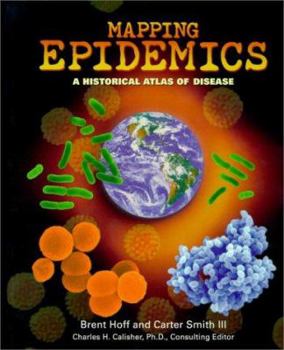Mapping Epidemics: A Historical Atlas of Disease
Select Format
Select Condition 
Book Overview
No Synopsis Available.
Format:Paperback
Language:English
ISBN:053116487X
ISBN13:9780531164877
Release Date:January 2000
Publisher:Children's Press(CT)
Length:112 Pages
Weight:0.80 lbs.
Dimensions:0.3" x 8.0" x 10.0"
Age Range:12 to 17 years
Grade Range:Grades 7 to 12
Customer Reviews
1 rating
Not a Juvenile Book!
Published by Thriftbooks.com User , 16 years ago
"Mapping Epidemics" by Brent Hoff and Carter Smith III. Subtitled: "A Historical Atlas Of Disease". Franklin Watt, A Division Of Grolier, NY. 2000. My wife and I went to Plymouth Public Library to pick out some books for "Grandma Barbara" to read to the children in our granddaughter's (Tabitha) first grade class. (Take a look at some of my more recent reviews for the books that were read.) While in the Children's Room, I noticed the book on display, "Mapping Epidemics"; the book had been catalogued as "Juvenile", J614.44. I borrowed the book. I was pleasantly surprised to find that this book is a jewel. Although only 112 pages long, the book is a concise compendium of 32 different diseases that historically have caused epidemics or possibly could cause epidemics. There is a brief but comprehensive summary of each disease's history, the cause(s) of each disease and what modern medicine has done to prevent any outbreak of that particular disease. Ancient diseases are covered: plague, cholera and diphtheria. But the book is up-to-date, as the "Hantavirus Pulmonary Syndrome", which made headlines in 1993, is also described. Although Hantavirus is associated with the rodent population in Southwest USA, I was surprised to see that the book's maps show cases in New York, Pennsylvania and Rhode Island. All the maps are interesting, showing, for example, diphtheria problems in the Ukraine (1995-1996), E. Coli outbreaks in the United States and Ebola Fever in Africa (1972-1997). The front of the book begins with a glossary of "important terms", which will be appreciated by most readers, particularly if the reader's background is non-medical. Since my background is engineering, I was pleased to be able to flip back to the glossary to check out a term that was new to me or not clear from usage. At the other end of the book, there are four pages entitled "A Chronology Of Infectious Disease". The listing begins with the year 2700 BC (Before Christ), with "...Malaria-like symptoms" being described in a Chinese text. The last listing is for 1999 West Nile virus in metropolitan New York. Since I tend to write reviews on World War II personal memoirs, I was shocked to read, on page 34, that an unapproved vaccine (for yellow fever) caused thousands of cases of jaundice in U. S. forces during World War II. I would recommend that the Department of Homeland Security place a copy of this slim volume on the desk of each and every one of their analysts, so that those Homeland Security analysts would consider infectious diseases as Weapons of Mass Destruction. The maps in this book show that diseases from anthrax to yellow fever can be as destructive as nuclear bombs. In 1918-1919, influenza killed more people, world-wide, than were killed in World War I. (See the map on page 45 to visualize how rapidly influenza spread in the United States from beginning on 14 September 1918 until influenza covered the entire continental U.S. on 5 October 1918.) Thi




